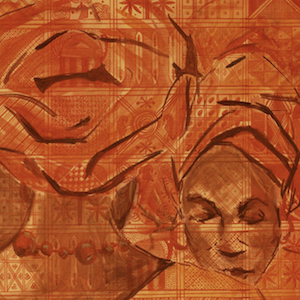National Museum of African Art
This site showcases an incredible collection of artwork from across the African continent, including more than 1,500 ancient artifacts, pieces collected in the colonial era, photographs, textiles, and works by modern African artists. The site provides historical and cultural information on every object, and is dedicated to making African art accessible to young and old alike.
Users can access all of the National Museum of Africa Art’s resources, including information about the museum generally and on visiting hours. Most notably for educators, the site includes sections on public programs, exhibitions, and collections. “Collections” links to an option to “Explore the Collection,” where users can locate art by country, kind of imagery, ethnic group, material used, motif, function, or artist, or virtually visit the Eliot Elisofon Photographic Archives.
The "Exhibitions” section has links to over 40 shows held at the museum between 1998 and the present. Exploring these shows produces a wealth of information and provides for a useful introduction to the “Collections” contents.
The exhibition, “Chant Avedissian: A Contemporary Artist of Egypt,” is useful for introducing students to modern African artists. Born in Cairo in 1951 to Armenian parents, Avedissian creates works that reflect his multicultural heritage. The works here are called “painted stencils” and make references to ancient Egypt, popular culture, and modern Egyptian history. One of the links from the first page of the exhibit takes students to the “icons” used in Avedissian’s work. The explanations make his work come alive. For students unfamiliar with Egyptian gods, Prime Minister Gamal Abdel Nasser, and movies like The Mummy, a good teaching project would be to have students research these topics and report back, assessing Avedissian’s work in light of their new knowledge.
The exhibition “A Spiral of History: A Carved Tusk from the Loango Coast, Congo,” showcases a completely different kind of artwork. A carved ivory tusk from late 19th-century Congo takes students on a different kind of adventure. The links provide background information, as well as remarkable individual close-ups of 16 vignettes carved on the tusk. The vignettes were meant to capture “the essence of Kongo life and beliefs as perceived by Kongo peoples on the Loango coast during a time of transition,” and were probably associated with events in a particular person’s life as well. The NMAA’s general collection has additional objects from the Kongo peoples, such as nkisi power figures, carved female cult figures, photographs, hats, and much more, which could be used to draw out common motifs in the art and help students gain a wider understanding of the history and culture of this part of Africa.
The site also provides useful resources for education in the "Learn" section, including activities for students from Kindergarten through 12th grade. High-school students could look for a variety of African drums (from the NMAA website or elsewhere), and write up explanations of how they were made and how they functioned within their cultures. Students might also search for African music to add an audio element to their projects.
This is a user-friendly site that helps educators and students think about African art and culture in new ways. It is also a worthy gateway to the wonderful museum it represents.
